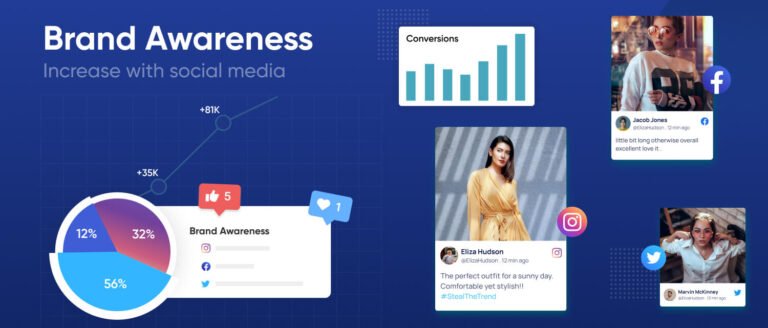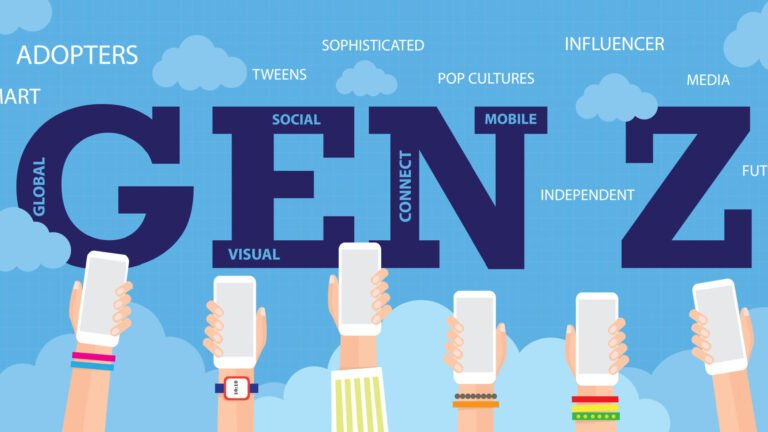How to Create a Content Marketing Strategy
In the bustling world of digital marketing, having a solid content marketing strategy is like having a reliable GPS for a road trip. It ensures you’re headed in the right direction, taking the most efficient routes, and making the most of your journey. A well-crafted content marketing strategy not only boosts your visibility but also builds trust, engages your audience, and drives conversions.
Creating a content marketing strategy involves several critical steps: understanding your audience, defining your goals, conducting thorough research, planning your content, executing with precision, and constantly analyzing and adjusting your approach. Today, we’ll dive deep into the nitty-gritty of crafting a killer content marketing strategy using the principles of Semantic/Holistic SEO by the renowned Koray Tuğberk GÜBÜR.
This guide will walk you through each step on how to create a content marketing strategy, ensuring that by the end, you’ll have a comprehensive strategy ready to roll. So, buckle up and let’s get started!
What Is Content Marketing Strategy?
A content marketing strategy is a comprehensive plan focused on creating, publishing, and distributing valuable, relevant, and consistent content to attract and retain a clearly defined audience—and ultimately, to drive profitable customer action. It’s more than just churning out blog posts or social media updates; it’s about delivering the right message to the right people at the right time.

At its core, a content marketing strategy involves understanding your audience’s needs and pain points, defining your brand’s voice and message, and developing a roadmap to deliver content that aligns with your business goals. This strategy helps you stay organized and ensures every piece of content you create serves a purpose.
Key Components of a Content Marketing Strategy:
- Audience Research: Understanding who your audience is, what they care about, and how your content can help solve their problems.
- Goal Setting: Defining clear, measurable goals that align with your overall business objectives.
- Content Audit: Evaluating existing content to identify gaps and opportunities.
- Content Planning: Creating a content calendar that outlines what content you will produce, when, and on which channels.
- Content Creation: Producing high-quality content that provides value to your audience.
- Content Distribution: Ensuring your content reaches the right people through the right channels.
- Performance Analysis: Measuring the effectiveness of your content and making adjustments as needed.

Why Is a Content Marketing Strategy Important?
In today’s digital landscape, having a content marketing strategy is not just beneficial—it’s essential. Here’s why:
- 1. Drives Targeted Traffic to Your Site: A well-defined content marketing strategy helps you attract the right audience to your website. By creating content that addresses the specific needs and interests of your target audience, you increase the likelihood of drawing in visitors who are genuinely interested in what you have to offer.
- 2. Builds Trust and Credibility: Consistently providing valuable and relevant content helps establish your brand as an authority in your industry. When your audience sees that you understand their problems and can offer solutions, their trust in your brand grows, making them more likely to engage with your content and consider your products or services.
- 3. Enhances Customer Engagement: Engaging content keeps your audience interested and encourages interaction. Whether it’s through comments, shares, or likes, the more your audience engages with your content, the stronger your relationship with them becomes.
- 4. Boosts SEO Efforts: Quality content is a cornerstone of effective SEO. By incorporating Semantic/Holistic SEO principles, you can create content that is not only valuable to your audience but also optimized for search engines. This improves your chances of ranking higher in search results, driving more organic traffic to your site.
- 5. Supports Lead Generation and Conversion: A strategic approach to content marketing helps guide your audience through the buyer’s journey. By providing the right content at each stage—awareness, consideration, and decision—you can nurture leads and convert them into customers.
- 6. Provides Measurable Results: With a content marketing strategy in place, you can track and measure the performance of your content. This data-driven approach allows you to see what’s working, what’s not, and make informed decisions to refine your strategy for better results.
- 7. Cost-Effective Marketing: Compared to traditional marketing methods, content marketing is more cost-effective. It provides long-term benefits as your content continues to attract and engage your audience long after it’s been published.
In summary, a content marketing strategy is crucial because it ensures that your efforts are purposeful, targeted, and effective. It aligns your content creation with your business goals, maximizes your reach and impact, and ultimately drives growth for your brand.
How to Create a Content Marketing Strategy
Creating a content marketing strategy might seem daunting, but breaking it down into manageable steps can make the process smoother and more effective. At its core, a content marketing strategy involves understanding your audience, defining your goals, and crafting content that meets both your audience’s needs and your business objectives. This approach ensures that every piece of content you create has a purpose and contributes to your overall marketing goals.
We’ll walk you through each crucial step, from researching your audience and setting clear goals to planning, creating, and distributing your content. Along the way, we’ll emphasize the importance of incorporating Semantic/Holistic SEO principles, which enhance your content’s relevance and searchability. By following this structured approach, you can build a comprehensive content marketing strategy that not only attracts and engages your target audience but also drives measurable results for your business.

Stay with us as we delve into the specifics of each step, providing practical tips and insights to help you craft a strategy that stands out in the crowded digital landscape. Let’s get started on this journey to creating content that truly makes an impact!
Step 1: Set Your Mission and Your Goals
The first step in creating a content marketing strategy is to set your mission and define your goals. This foundational step ensures that all your content efforts are aligned with your broader business objectives and provide value to your audience.
Defining Your Mission
| Question | Details |
|---|---|
| Who is your target audience? | Small business owners |
| What kind of content will you deliver? | Engaging and actionable content about effective digital marketing strategies |
| What value will your content provide? | Education on effective digital marketing strategies |
A clear mission statement acts as a guiding light, keeping your content focused and consistent. For example, a mission statement might be: “To educate small business owners about effective digital marketing strategies through engaging and actionable content.”
Setting Clear, Measurable Goals
| Goal | Details |
|---|---|
| Increase Website Traffic | Aim to boost organic traffic by 25% within the next six months. |
| Enhance Brand Awareness | Strive to gain 1,000 new social media followers in three months. |
| Generate Leads | Aim to collect 500 new email subscribers in the next quarter. |
These goals will provide you with clear targets to aim for and metrics to measure your progress. They also help in prioritizing your efforts and allocating resources efficiently.
Step 2: Establish Your KPIs
Once you’ve set your mission and goals, the next step is to establish your Key Performance Indicators (KPIs). KPIs are the specific metrics that will help you measure the success of your content marketing efforts. They provide a quantifiable way to track progress and determine whether you’re meeting your goals.

Why KPIs Matter: KPIs give you a clear picture of how your content is performing and where you might need to adjust your strategy. They help you stay focused on your goals, provide insights into what’s working and what’s not, and allow you to make data-driven decisions.
Choosing the Right KPIs: Your KPIs should align with your specific goals and provide actionable insights. Here are some common KPIs you might consider:
Content Marketing Metrics
| Metric | Description |
|---|---|
| Traffic Metrics | Measure the number of visitors to your website, page views, and the sources of your traffic (organic, direct, referral, social). |
| Engagement Metrics | Track metrics like time spent on page, bounce rate, social shares, comments, and likes to understand how well your audience is engaging with your content. |
| Lead Generation Metrics | Monitor the number of leads generated, conversion rates, and the effectiveness of lead magnets like eBooks, newsletters, or free trials. |
| SEO Metrics | Evaluate your content’s impact on search engine rankings, keyword performance, and organic search traffic. |
| Sales Metrics | Track the influence of your content on sales, including the number of new customers acquired, revenue generated from content-driven leads, and the cost per acquisition. |
Setting Benchmarks and Targets: For each KPI, establish benchmarks and set specific targets. For example, if your goal is to increase website traffic, you might set a target of 10,000 unique visitors per month. Benchmarks help you understand your current performance, while targets give you a goal to strive for.
Regularly Reviewing and Adjusting: KPIs are not set in stone. Regularly review your metrics to see how well you’re progressing towards your goals. If certain KPIs are not meeting your expectations, analyze the data to understand why and adjust your strategy accordingly.
Step 3: Know Your Audience
Understanding your target audience is crucial to the success of your content marketing strategy. Without a clear picture of who your audience is, what they care about, and how they consume content, your efforts might miss the mark. Conducting thorough audience research helps you create content that resonates, engages, and ultimately drives the desired actions.
Why Audience Research Matters: Knowing your audience allows you to tailor your content to their specific needs, preferences, and pain points. This relevance not only captures their attention but also builds trust and loyalty over time.

Steps to Conduct Audience Research:
1. Develop Audience Personas: Create detailed personas representing your ideal customers. Include demographic information (age, gender, location), psychographic details (interests, values, lifestyle), and behavioral insights (buying habits, preferred content formats). These personas will guide your content creation process, ensuring it speaks directly to your target audience.
2. Analyze Existing Data: Leverage data from your website analytics, social media insights, and customer feedback to understand your audience’s behavior. Look for patterns in content consumption, engagement rates, and conversion paths to identify what resonates with your audience.
3. Conduct Surveys and Interviews: Direct feedback from your audience is invaluable. Conduct surveys, interviews, and focus groups to gather qualitative insights into their preferences, challenges, and content needs. Ask questions like:
- What topics are most relevant to you?
- Which content formats do you prefer (blogs, videos, infographics)?
- What are your biggest challenges or pain points?
4. Monitor Social Media and Online Communities: Social media platforms and online communities (like forums and discussion boards) are gold mines for audience insights. Monitor conversations to see what your audience is talking about, what questions they’re asking, and what content they’re sharing. This real-time feedback can inform your content strategy and help you stay current with audience trends.
5. Competitive Analysis: Study your competitors to see who they’re targeting and how their audience responds to their content. Identify gaps in your competitors’ content that you can fill to better serve your audience.
Applying Audience Insights: Use the insights gained from your research to inform your content planning and creation. Ensure that every piece of content you produce aligns with your audience’s interests and needs. This relevance will not only attract their attention but also encourage deeper engagement and loyalty.
Step 4: Assess Your Current Position
Before you can effectively move forward with your content marketing strategy, it’s essential to understand where you currently stand. Performing a content audit allows you to evaluate your existing content, identify what’s working, and pinpoint gaps that need to be filled. This step provides a solid foundation for building a more effective and targeted content strategy.
Why a Content Audit Matters: A content audit helps you take stock of your existing assets, understand their performance, and identify opportunities for improvement. By knowing what you already have and how it’s performing, you can make informed decisions about where to focus your future efforts.

Steps to Perform a Content Audit
1. Inventory Your Content
Start by cataloging all your existing content. This includes blog posts, articles, videos, infographics, podcasts, social media posts, and any other content formats you use. Create a detailed list with relevant information such as publication dates, URLs, content types, and topics covered.
2. Analyze Performance Metrics
Evaluate the performance of each piece of content using key metrics such as traffic, engagement (likes, shares, comments), conversions, and SEO rankings. Tools like Google Analytics, social media insights, and SEO software can provide valuable data. Look for patterns in what types of content and topics are performing well and which are underperforming.
3. Identify Content Gaps
Based on your audience research and performance analysis, identify gaps in your current content. Are there topics your audience is interested in that you haven’t covered yet? Are there content formats you haven’t explored but could be beneficial? Understanding these gaps will help you create a more comprehensive and relevant content strategy.
4. Evaluate Content Quality
Assess the quality of your existing content. Is it well-written, engaging, and informative? Does it align with your brand voice and mission? Identify any content that may need updating, repurposing, or improving to meet your current standards and audience expectations.
5. Align Content with Goals
Ensure that your content aligns with your previously defined goals and KPIs. Determine which pieces of content contribute most effectively to achieving your goals and which do not. This alignment will help you focus your efforts on creating content that drives meaningful results.
6. Document Your Findings
Compile your findings into a comprehensive report. This document should include insights into what’s working, what’s not, identified content gaps, and recommendations for future content creation. This report will serve as a valuable reference as you develop and refine your content marketing strategy.
Step 5: Figure Out the Best Content Channels
Once you have a clear understanding of your audience and have assessed your current content, the next step is to determine the best channels for distributing your content. Choosing the right platforms is crucial to ensuring that your content reaches and resonates with your target audience.
Why Choosing the Right Channels Matters: The effectiveness of your content is significantly influenced by where it’s published and promoted. The right channels amplify your reach, enhance engagement, and help you achieve your content marketing goals more efficiently.

Steps to Identify the Best Content Channels:
1. Know Where Your Audience Spends Time: Use your audience research to identify which platforms your target audience frequents. Different demographics prefer different channels—professionals might be on LinkedIn, younger audiences on TikTok, and a wide range of users on Facebook and Instagram. Understanding where your audience spends their time helps you focus your efforts on the most relevant platforms.
2. Analyze Current Performance: Look at your existing content’s performance across different channels. Which platforms are driving the most traffic, engagement, and conversions? Analyzing this data can reveal which channels are currently most effective for your brand and highlight areas for potential growth.
3. Understand the Strengths of Each Channel: Each content channel has its unique strengths and ideal content formats. For example:
- Blogs are great for in-depth articles and SEO.
- Social Media platforms like Instagram and TikTok excel with visual and short-form content.
- YouTube is perfect for video content.
- Podcasts cater to audio content consumers.
- Email Newsletters are effective for direct and personalized communication.

4. Consider Your Resources: Evaluate the resources you have available, including time, budget, and team skills. Managing multiple channels requires effort and consistency. Focus on a few key platforms where you can maintain a strong, consistent presence rather than spreading yourself too thin.
5. Test and Iterate: Don’t be afraid to experiment with new channels. Test different types of content on various platforms and measure their performance. Use this data to refine your approach, double down on what works, and abandon what doesn’t. Continuous testing and iteration help you stay agile and responsive to changing audience behaviors and preferences.
6. Integrate Your Channels: Ensure that your content channels work together seamlessly. Cross-promote your content across different platforms to maximize reach. For instance, share blog posts on social media, embed YouTube videos in your blog, and promote podcasts via email newsletters. An integrated approach enhances your overall content strategy’s effectiveness.
Step 6: Decide on Content Types
Now that you’ve identified the best channels for distributing your content, it’s time to decide on the types of content that will best engage your audience. Different content formats can appeal to various segments of your audience and serve different purposes in your marketing strategy.
Why Content Types Matter: The type of content you create can significantly impact how your audience engages with it. By diversifying your content types, you can cater to different preferences, increase engagement, and ensure that your content marketing efforts are versatile and effective.

Steps to Decide on Content Types:
1. Understand Your Audience’s Preferences: Refer back to your audience research to determine what types of content your target audience prefers. Are they more inclined to read long-form articles, watch videos, or engage with interactive content like quizzes and polls? Understanding these preferences helps you choose the right content formats.
2. Align Content Types with Goals: Different content types can help achieve different goals. For instance:
- Blog Posts: Ideal for driving organic traffic and establishing thought leadership.
- Videos: Great for engaging audiences and explaining complex topics in an easy-to-digest format.
- Infographics: Perfect for presenting data and statistics in a visually appealing way.
- Ebooks and Whitepapers: Excellent for lead generation and providing in-depth knowledge.
- Social Media Posts: Effective for brand awareness and fostering community engagement.
- Podcasts: Suitable for reaching audiences who prefer audio content and building a loyal following.
Choose content types that align with your specific goals and KPIs.
3. Assess Your Resources and Skills: Consider the resources you have available, including your team’s skills and your budget. Some content types, like high-quality videos, may require more investment in terms of time and money, while others, like blog posts, may be more manageable with existing resources.
4. Analyze Competitor Content: Look at the types of content your competitors are producing and how their audience is responding. This can give you insights into what works well in your industry and help you identify gaps that you can fill with your content.
5. Experiment and Iterate: Start with a mix of different content types and track their performance. Use analytics to measure which formats are most effective in achieving your goals. Be prepared to iterate and refine your approach based on what you learn. Flexibility and willingness to experiment are key to finding the right mix of content types.
6. Plan for Repurposing Content: Maximize the value of your content by repurposing it into different formats. For example, a comprehensive blog post can be turned into an infographic, a series of social media posts, or even a video. Repurposing content allows you to reach different segments of your audience and extend the lifespan of your content.
Step 7: Identify and Allocate Resources
Creating and executing a successful content marketing strategy requires careful planning and resource allocation. Identifying the necessary resources—including budget, tools, and personnel—is essential to ensure that your strategy is feasible and sustainable.
Why Resource Allocation Matters: Properly allocating resources ensures that you have the means to create high-quality content consistently and effectively. It helps you avoid overextending your team and ensures that you can meet your content marketing goals within your available budget.

Steps to Identify and Allocate Resources:
1. Determine Your Budget: Start by defining your content marketing budget. Consider all potential expenses, including content creation (writing, design, video production), tools and software, promotion and distribution, and personnel costs. A clear budget helps you prioritize spending and avoid unexpected costs.
2. Identify Essential Tools and Software: There are numerous tools available to support your content marketing efforts. These can include:

- Content Management Systems (CMS): For creating, publishing, and managing your content (e.g., WordPress).
- SEO Tools: For keyword research, analytics, and optimization (e.g., SEMrush, Ahrefs).
- Graphic Design Tools: For creating visual content (e.g., Canva, Adobe Creative Suite).
- Social Media Management Tools: For scheduling and monitoring social media posts (e.g., Hootsuite, Buffer).
- Analytics Tools: For tracking content performance and gathering insights (e.g., Google Analytics, HubSpot).
Identify the tools that best fit your needs and budget, ensuring they integrate well with your overall strategy.
3. Assemble Your Team: Determine the personnel required to execute your content marketing strategy. This may include content creators (writers, designers, videographers), SEO specialists, social media managers, and data analysts. Depending on your budget and needs, you can hire in-house staff, freelancers, or work with agencies.
4. Define Roles and Responsibilities: Clearly define the roles and responsibilities of each team member. Establish a content creation and approval process to ensure smooth workflow and quality control. Everyone should know their tasks, deadlines, and who to collaborate with on specific projects.
5. Allocate Time and Resources: Plan and allocate the necessary time and resources for each aspect of your content marketing strategy. This includes time for research, creation, editing, distribution, and analysis. Use project management tools to keep track of tasks and deadlines, ensuring that everything runs smoothly and on schedule.
6. Plan for Continuous Learning and Improvement: Content marketing is dynamic, and staying ahead requires continuous learning and adaptation. Allocate resources for team training, attending industry conferences, and staying updated with the latest trends and best practices. Investing in your team’s development can pay off with improved skills and innovative ideas.
7. Monitor and Adjust Resource Allocation: Regularly review your resource allocation to ensure it aligns with your goals and is delivering the desired results. Be prepared to adjust your budget, tools, and personnel based on performance data and changing needs. Flexibility and responsiveness are key to maintaining an effective content marketing strategy.
Step 8: Create a Content Calendar
A content calendar is a vital tool for planning, organizing, and scheduling your content marketing efforts. It ensures that your content creation and publication processes are streamlined, consistent, and aligned with your overall strategy and goals.
Why a Content Calendar Matters: A well-structured content calendar helps you stay organized, maintain consistency, and keep track of important dates and deadlines. It allows you to plan your content in advance, ensuring that you’re always prepared and that your content aligns with your marketing objectives and audience needs.

Steps to Create a Content Calendar
1. Choose Your Tools
Decide on the tools you’ll use to create and manage your content calendar. This could be as simple as a spreadsheet (Google Sheets, Excel) or more advanced project management tools (Trello, Asana, CoSchedule). Choose a tool that fits your team’s needs and workflow.
2. Define Your Content Themes and Topics
Start by outlining the key themes and topics that align with your content strategy. This should be based on your audience research, goals, and the gaps identified in your content audit. Having a set of core themes helps ensure that your content remains focused and relevant.
3. Set Publication Frequency
Determine how often you’ll publish new content. This could be daily, weekly, bi-weekly, or monthly, depending on your resources and audience’s consumption habits. Be realistic about what you can consistently achieve without compromising quality.
4. Plan Content Around Key Dates and Events
Identify important dates, events, holidays, and industry happenings that are relevant to your audience and business. Plan your content around these dates to leverage timely opportunities for engagement. This includes seasonal trends, product launches, and special campaigns.
5. Assign Responsibilities
Clearly assign tasks and responsibilities to team members for each piece of content. This includes content creation, editing, design, approval, and distribution. Ensure everyone knows their roles and deadlines to keep the workflow smooth.
6. Include Content Details
For each entry in your content calendar, include important details such as:
- Title/Topic: The main idea or headline of the content.
- Content Type: Blog post, video, infographic, podcast, etc.
- Objective: The goal or purpose of the content.
- Target Audience: The specific segment of your audience.
- Keywords/SEO: Relevant keywords for optimization.
- Publication Date: When the content will be published.
- Distribution Channels: Where the content will be promoted.
7. Review and Adjust Regularly
A content calendar is a living document that should be reviewed and adjusted regularly. Set aside time each month or quarter to evaluate your calendar’s effectiveness, make necessary adjustments, and plan for upcoming periods. This ensures your content strategy remains agile and responsive to changing circumstances.
8. Maintain Flexibility
While planning is crucial, it’s also important to maintain flexibility. Be prepared to adjust your content calendar to accommodate unexpected opportunities, industry changes, or urgent topics that arise.
Step 9: Create Content
Creating high-quality content is the heart of your content marketing strategy. It’s what engages your audience, builds trust, and drives action. Here are some tips and best practices to ensure your content is top-notch.

Tips and Best Practices for Creating High-Quality Content:
1. Focus on Value: Ensure that every piece of content you create provides genuine value to your audience. Answer their questions, solve their problems, and offer insights that they can’t easily find elsewhere.
2. Maintain Quality and Consistency: Quality should never be sacrificed for quantity. Each piece of content should be well-researched, well-written, and polished. Consistency in tone, style, and messaging also helps build a recognizable brand voice.
3. Optimize for SEO: Incorporate SEO best practices to ensure your content is discoverable. Use relevant keywords, optimize meta tags, include internal and external links, and make sure your content is structured for readability.
4. Use Engaging Formats: Diversify your content formats to keep your audience engaged. Use a mix of blog posts, videos, infographics, podcasts, and interactive content like quizzes or polls. Different formats can appeal to different segments of your audience.
5. Tell Stories: Storytelling is a powerful tool in content creation. Use stories to make your content more relatable and memorable. Share real-life examples, case studies, and anecdotes to illustrate your points.
6. Incorporate Visuals: Visual elements such as images, infographics, and videos can enhance your content and make it more engaging. They help break up text and make your content more digestible.
7. Encourage Interaction: Invite your audience to engage with your content by asking questions, encouraging comments, and including calls to action. Interaction fosters a sense of community and keeps your audience involved.
8. Review and Edit: Always review and edit your content before publishing. Check for clarity, grammar, and spelling errors. A second set of eyes, like an editor, can help catch mistakes you might have missed.
Step 10: Distribute and Market
Creating great content is only half the battle. You also need effective strategies to distribute and market your content to ensure it reaches your target audience.
Strategies for Distributing and Marketing Your Content
1. Leverage Social Media
Promote your content on social media platforms where your audience is active. Tailor your posts to each platform and use engaging visuals and headlines to capture attention. Schedule regular posts to maintain visibility.
2. Use Email Marketing
Email newsletters are a direct way to reach your audience. Share your latest content, special offers, and updates. Segment your email list to send personalized content to different audience groups.
3. Collaborate with Influencers
Partner with influencers or industry leaders who can help amplify your content. Their endorsement can expand your reach and lend credibility to your brand.
4. Repurpose Content
Maximize the value of your content by repurposing it into different formats. Turn a blog post into a video, an infographic, or a podcast episode. This helps you reach different audience segments and extend the lifespan of your content.
5. Utilize Paid Promotion
Consider using paid advertising to boost your content’s reach. Platforms like Facebook, Instagram, and Google Ads offer targeted advertising options that can help you reach a broader audience.
6. Engage in Content Syndication
Syndicate your content on other platforms or websites to increase its visibility. This can include guest blogging, submitting articles to industry publications, or using content distribution networks.
7. Participate in Online Communities
Engage with online communities, forums, and groups related to your industry. Share your content where appropriate and contribute to discussions to build relationships and drive traffic back to your site.
Step 11: Measure Results
Measuring and analyzing the results of your content marketing efforts is crucial for understanding what works and what doesn’t. This data-driven approach helps you refine your strategy and improve your content’s effectiveness over time.

Methods for Measuring and Analyzing Results
1. Track Key Performance Indicators (KPIs)
Refer back to the KPIs you established in Step 2. Monitor these metrics to gauge the performance of your content. Key KPIs might include website traffic, engagement rates, lead generation, and conversion rates.
2. Use Analytics Tools
Utilize tools like Google Analytics, SEMrush, and social media insights to gather data on your content’s performance. These tools provide detailed reports on various metrics, helping you understand your audience’s behavior and preferences.
3. Analyze Engagement Metrics
Look at how your audience interacts with your content. Metrics like time spent on page, bounce rate, social shares, comments, and likes can give you insights into what content resonates most with your audience.
4. Monitor Conversion Rates
Track how well your content is driving desired actions, such as signing up for a newsletter, downloading a resource, or making a purchase. Conversion rates help you measure the direct impact of your content on your business goals.
5. Gather Feedback
Solicit feedback from your audience to gain qualitative insights. Use surveys, polls, and direct comments to understand what they like, what they don’t, and what they’d like to see more of.
6. Conduct Regular Reviews
Regularly review your content performance to identify trends and patterns. Use these insights to inform your content planning and make data-driven decisions. Set aside time monthly or quarterly to evaluate your strategy’s effectiveness and make necessary adjustments.
7. Adjust and Optimize
Based on your analysis, refine your content strategy. Focus on what’s working, improve or eliminate what’s not, and experiment with new ideas to keep your content fresh and engaging.
Content Marketing Strategy Examples
Looking at successful content marketing strategies can provide valuable inspiration and insights for your own efforts. Here are a few examples of brands that have nailed their content marketing strategies and what we can learn from them.
1. HubSpot: Inbound Marketing Excellence
Strategy Overview: HubSpot, a leader in inbound marketing and sales software, has built its brand through a comprehensive and well-executed content marketing strategy. They offer a plethora of valuable content, including blog posts, ebooks, webinars, and courses.

Key Elements:
- Educational Content: HubSpot’s blog covers a wide range of topics relevant to marketers, sales professionals, and customer service reps. Their content is designed to educate and empower their audience.
- Content Variety: They produce diverse content formats, from in-depth guides and how-to articles to videos and infographics, catering to different preferences.
- Free Tools and Resources: HubSpot provides free tools like website graders, CRM software, and templates, which attract and retain users by offering immediate value.
- SEO and Keywords: They use SEO best practices to ensure their content ranks well in search engines, driving organic traffic to their site.
Takeaway: Provide high-quality, educational content that addresses your audience’s needs and use a variety of formats to reach a broader audience.
2. Red Bull: Extreme Content for an Extreme Brand
Strategy Overview: Red Bull has successfully positioned itself as more than just an energy drink company through its adventurous and high-energy content marketing strategy. They focus on extreme sports and high-adrenaline activities, aligning perfectly with their brand identity.

Key Elements:
- Branded Content: Red Bull produces a wide array of branded content, including videos, documentaries, and magazines, all centered around extreme sports and adventure.
- Events and Sponsorships: They sponsor and host major events like the Red Bull Air Race and Red Bull Stratos, creating unique content opportunities and engaging their audience.
- Social Media Engagement: Red Bull leverages social media platforms to share thrilling content and connect with their audience, fostering a strong community around their brand.
- User-Generated Content: They encourage their audience to share their own extreme experiences, amplifying their reach and building authenticity.
Takeaway: Align your content with your brand’s identity and values, and engage your audience with content that excites and inspires them.
3. Glossier: Community-Driven Beauty Content
Strategy Overview: Glossier, a beauty brand, has grown rapidly through a content strategy focused on building a strong community and leveraging user-generated content. They emphasize transparency, inclusivity, and real customer experiences.
Key Elements:
- Customer Stories: Glossier shares real stories and testimonials from their customers, making their content relatable and authentic.
- User-Generated Content: They actively encourage their audience to share their beauty routines and product reviews on social media, featuring these posts on their platforms.
- Influencer Partnerships: Glossier collaborates with influencers to reach wider audiences and create buzz around their products.
- Engaging Social Media Presence: Their social media channels are vibrant and interactive, fostering a sense of community and dialogue with their audience.
Takeaway: Build a community around your brand by encouraging user-generated content and leveraging authentic customer experiences.
4. Airbnb: Immersive Travel Experiences
Strategy Overview: Airbnb has transformed the travel industry with its content marketing strategy focused on creating immersive and personalized travel experiences. They use storytelling to connect with their audience on an emotional level.

Key Elements:
- Storytelling: Airbnb shares compelling stories about unique stays and experiences, highlighting the personal and cultural aspects of travel.
- Local Insights: Their content often features local hosts and experiences, providing travelers with authentic insights and recommendations.
- High-Quality Visuals: They use stunning photography and videos to showcase destinations and accommodations, making their content visually appealing.
- User-Generated Content: Airbnb encourages guests to share their travel stories and photos, adding authenticity and social proof to their content.
Takeaway: Use storytelling to create an emotional connection with your audience and highlight the unique value your brand offers.
5. Nike: Inspirational and Motivational Content
Strategy Overview: Nike’s content marketing strategy focuses on inspiration and motivation, aligning with their brand slogan, “Just Do It.” They produce content that celebrates athleticism, perseverance, and personal achievement.

Key Elements:
- Inspirational Stories: Nike shares stories of athletes overcoming challenges and achieving greatness, inspiring their audience to push their limits.
- Branded Content: Their videos, ads, and social media posts are highly produced and emotionally charged, often featuring top athletes and compelling narratives.
- Community Engagement: Nike fosters a community of athletes and fitness enthusiasts through interactive campaigns and social media engagement.
- Product Integration: Their content seamlessly integrates their products, showing them in action and highlighting their benefits.
Takeaway: Inspire and motivate your audience with powerful storytelling and high-quality content that aligns with your brand’s mission and values.
By studying these successful content marketing strategies, you can gain insights into what makes content effective and how to tailor your approach to fit your brand and audience. Remember, the key is to provide value, engage authentically, and stay true to your brand’s identity.












